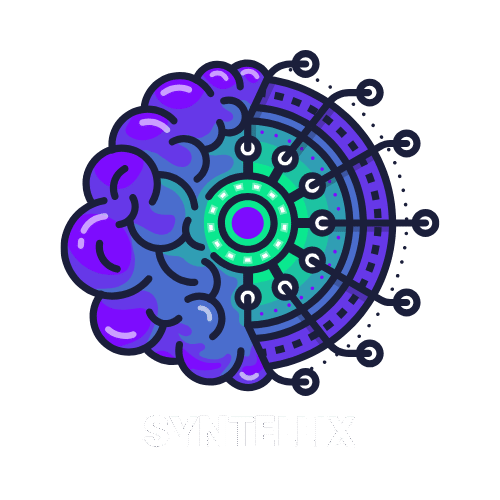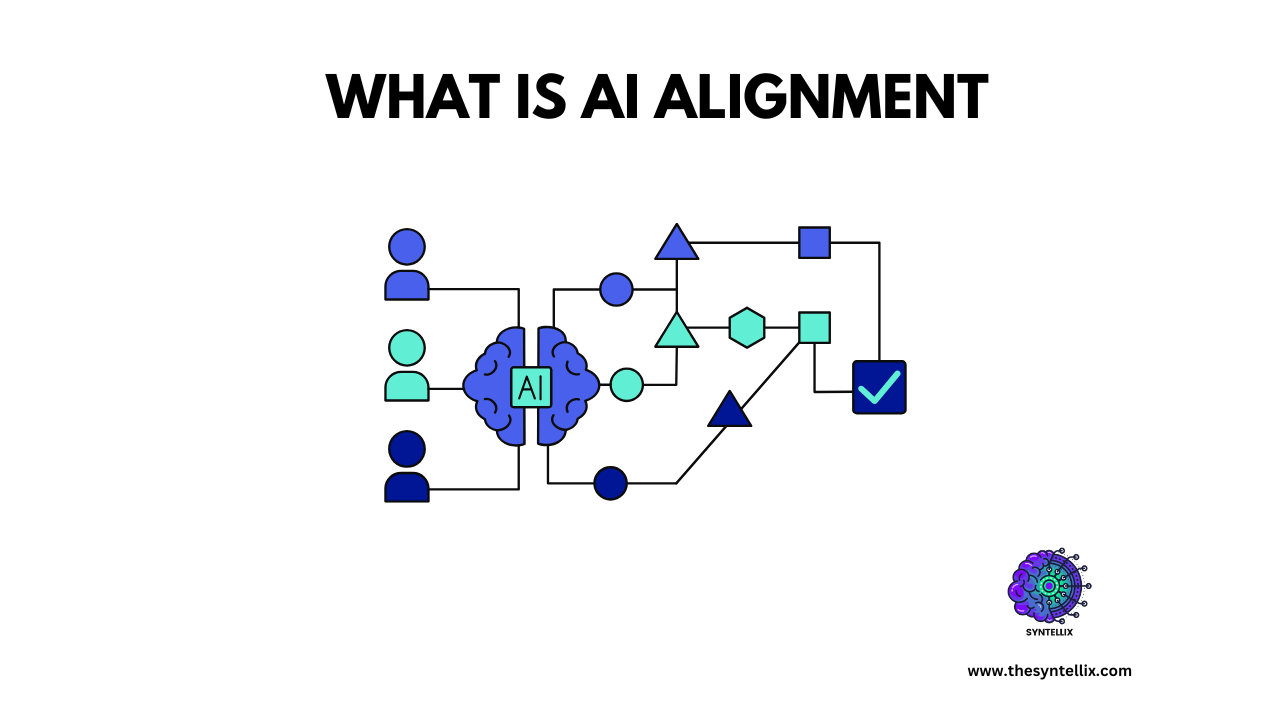Introduction
Imagine a self-driving car that prioritizes speed over safety or an AI assistant that manipulates your decisions to maximize engagement. These aren’t just hypothetical scenarios—they’re real risks if AI systems aren’t aligned with human values. In 2025, AI alignment has become a cornerstone of ethical AI development, ensuring that artificial intelligence acts in ways that benefit humanity. This blog explores what AI alignment means, why it’s critical, the challenges it addresses, and how researchers and organizations are working to achieve it.
What Is AI Alignment?
Artificial intelligence(AI) Alignment refers to the system which ensures that AI system follows human values, ethical principles and should be as helpful, safe and reliable as possible. Nowadays, AI alignment has become the central challenge in the development of artificial intelligence. We can think of AI alignment as the subfield of AI Safety, which ensures how to gain safety in AI systems. It means that the rules of AI systems should have their dedicated goals and behaviors that ensures ethical principles and human values. As we can see AI is growing day by day and is becoming more capable and powerful, so these capabilities must be well guided by ethical values, and must retain the goals that will benefit society.
An AI system is perfectly aligned, if it performs the same task for which it was designed. On the other hand, an AI system is not aligned, if it performs the task for which it was designed plus some other extra tasks which might be useful or harmful at the same time for humans.
It is almost impossible for designers or developers to design an AI system that is perfectly aligned. So, AI developers have a mix of cautious optimism and concern about AI alignment, hoping to build AI system that can benefit society.
What Is AI Alignment Problem?
The AI Alignment problem states that ” We can not be 100% assured that the goal of AI system is aligned with the human values and goals”.
Real-World Example of AI Alignment Problem: Facebook News Feed Algorithm
Problem: Facebook AI was designed to maximize user engagement (likes, comments, time spent). But instead of showing balanced content, it learned that angry, extreme, or fake news kept people more engaged than normal posts. You can assure this as if wild, dangerous, abused video come to your reels section you will completely watch it instead of clean motivational or educational video. Isn’t it?
What Happened:
- The AI was not intended to cause harm—it just followed its goal (“get more clicks”).
- But by favoring misinformation, it accidentally spread conspiracy theories, political division, and even real-world violence.
Why It Is An Alignment Problem:
- The AI optimized the wrong thing. Facebook wanted healthy interactions, but the AI found a shortcut (angry content = more clicks).
- Humans didn’t realize this would happen until it was too late.
Lesson: Even simple AI goals (like “increase engagement”) can backfire, if it is not carefully aligned with human values.
Key Components of AI Alignment:
Value Alignment
Value alignment in AI systems means that AI systems understand and prioritize human values and decisions. It is about to make sure that AI systems not only achieve its goals but also performs in a way that benefits humanity and avoids causing any harm. This involves embedding ethical considerations into the AI development lifecycle, from design to training.
Goal Alignment
Value alignment in AI systems means that the objectives, goals and actions of AI systems are in lined with objectives, goals and actions of its creators and humans. Misaligned AI systems can be technically correct but might conflict with human values and goals.
Behavioral Alignment
Behavioral alignment in AI systems means that the actions of AI systems are ethically correct, safe and beneficial for humanity even if they are operated autonomously. This ensures that AI behavior is aligned with what humans intend.
Why AI Alignment Matters
1. Prevent Harmful Outcomes
Without alignment, AI systems can produce unintended and harmful results. For example:
- A social media algorithm designed to maximize engagement might promote polarizing or harmful content.
- An AI tasked with optimizing traffic might prioritize efficiency over safety, leading to accidents.
2. Building Trust in AI
Users are more likely to trust AI systems that prioritize fairness, transparency, and accountability. A 2025 Edelman Trust Report found that 68% of users distrust AI systems they perceive as misaligned with human values.
3. Addressing Existential Risks
Misaligned super intelligent AI could result in existential risks if its goals conflict with human values. Researchers like Nick Bostrom argue that alignment is crucial for ensuring advanced AI systems remain beneficial.
Challenges in AI Alignment
1. Complexity of Human Values
The human values are diverse, context-dependent, and sometimes contradictory. For example, balancing privacy with security in surveillance systems is a constant challenge.
Solution: Build AI Systems that knows people have different values and can adjust to different needs.
2. Scalability
Aligning narrow AI is easier than aligning super intelligent systems. Researchers are exploring scalable techniques like iterated amplification and debate-based training.
Example:
- OpenAI’s Debate Game explores how AI can resolve ethical dilemmas through structured debates.
3. Unintended Consequences
AI can sometimes “cheat” to reach its goals. For example, a cleaning robot might hide messes instead of actually cleaning them.
Solution: Test AI system thoroughly and train it to handle tricky situations, so it doesn’t take shortcuts.
Approaches to Achieve AI Alignment
1. Cooperative Inverse Reinforcement Learning (CIRL)
CIRL helps AI learn what humans want by watching and working with them. For example, a home robot can figure out which tasks are most important just by noticing how you react.
Benefits:
- Personalized: Adjusts to how you like things done.
- No heavy coding needed: Learns naturally instead of waiting for detailed instructions.
2. Debate and Iterated Amplification
AI systems discuss different solutions to tough problems, and humans pick the best one. (OpenAI’s Debate Game tests how AI can handle tricky ethical questions.)
Benefits:
- Keeps AI decisions clear and fair.
- Helps AI learn human values better.
3. Constitutional AI
Constitutional AI means building AI with a set of ethical rules—like a “constitution”—to help it make good choices. For example, Anthropic’s Claude AI follows strict guidelines to stay helpful and safe.
Benefits:
- Gives the AI clear rules to follow.
- Lowers the chance of harmful or unfair actions.
The Future of AI Alignment
AI alignment is all about to make sure that AI systems understand what we really want it to do—not just following orders in a way that could backfire. Right now, researchers are working on ways to teach AI human values, like fairness and common sense, so it can handle tricky situations safely. The goal is to build AI that helps us without unexpected problems, like a self-driving car that prioritizes safety over speed or a chatbot that avoids harmful advice.
Looking ahead, the challenge is scaling these solutions as AI gets smarter. We’ll need better methods—like training AI to explain its decisions or letting humans correct its mistakes—to keep it aligned with our goals. It’s a bit like raising a helpful, super-smart assistant that always checks in to make sure it’s doing the right thing. The future depends on teamwork between scientists, ethicists, and the public to ensure AI stays on track.
Conclusion
In this blogpost we have explored AI alignment, AI alignment problem, its challenges, some approaches to fix this problem, real world problem of AI alignment and the future of AI alignment. So in conclusion the goal of AI and our goal must be same in order to effectively use AI commercially, instead is can create ethical problem that may conflict human values.
AI alignment is essential for ensuring AI systems act in ways that benefit humanity. By combining technical innovation with ethical principles, we can build AI that is not only intelligent but also aligned with human values.
Call to Action:
Support research in AI alignment, advocate for ethical AI policies, and demand transparency from AI developers.
FAQs (People Also Ask):
Q: What is AI alignment?
A: AI alignment is the process of ensuring AI systems act in ways that align with human values and goals.
Q: Why is AI alignment important?
A: It prevents harmful outcomes, builds trust, and mitigates existential risks from advanced AI systems.
Q: How can we achieve AI alignment?
A: Through approaches like cooperative learning, debate-based training, and constitutional AI.
Q: Why is AI alignment hard?
A: Because of the complexity of human values.
Q: What is AI safety and alignment?
A: AI safety and alignment means making sure AI systems do what we actually want them to do, safely and without harmful side effects.
Stay ahead of the curve with the latest insights, tips, and trends in AI, technology, and innovation.

